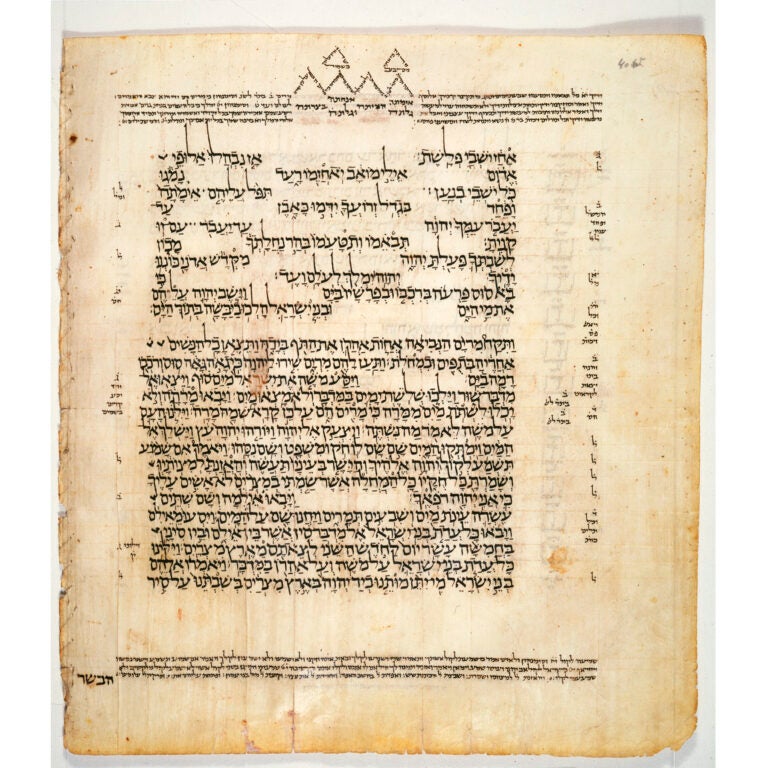Leningrad Codex folio 40 verso, Exodus 15:14b-16:3a
This particular page of the Leningrad Codex includes the ending of “The Song at the Sea” sung by Moses and the Israelites after they had crossed the sea on dry land, while the Pharaoh and his army were overwhelmed by the waves of the sea.
The text of this poem, along with several others, such as the Song of Moses in Deuteronomy 32, and the Song of Deborah in Judges 5, are written in a special way, in this case, “text over space and space over text.” The Masoretic notes at the top of the page look like waves. Ordinarily, the biblical text is written in three columns, but because part of the Song is included on the page, the narrative that begins in 15:22 is written across the page in one column.
The Song celebrates God’s work on behalf of his people, Israel, in which he triumphs over their enemies and brings them to his “own possession.” As the narrative continues, the people leave the Sea and go to the wilderness of Shur and from there to the bitter waters of Marah. It is at Marah that the water is made sweet (in other words, drinkable) when, at God’s instruction, Moses throws a piece of wood into the water. After this saving act of God, the people continue on until they come to the wilderness of Sin. As the page ends, the people are beginning to complain of hunger.
Photograph by Bruce and Kenneth Zuckerman, West Semitic Research, in collaboration with the Ancient Biblical Manuscript Center. Courtesy National Library of Russia (Saltykov-Shchedrin).

Biblical Manuscripts
- Leningrad Codex (General Information).
- Leningrad f.40b (Folio 40b – a page of biblical text).
- Leningrad Carpet Page (An illuminated page).
Article Categories
Non-Biblical Ancient Texts Relating to the Biblical World: Non-biblical inscriptions and documents from ancient times that improve our understanding of the world of the Bible.
Biblical Manuscripts: Images and commentary on ancient and medieval copies of the Bible.
Dead Sea Scrolls: Images and commentary on selected Dead Sea Scrolls manuscripts.
USC Archaeology Research Center: Images of artifacts from the teaching collection of the University of Southern California.